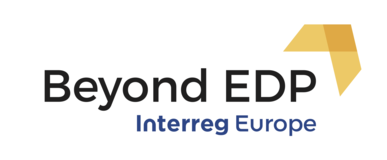The Regional Innovation Strategy (RIS) for Saxony-Anhalt 2014-2020 has been adopted by the Land government in February 2014. It build on earlier innovation strategies, which had already highlighted the importance of the nexus between business, universities and research institutes for fostering innovation and securing economic competitiveness. According to the Regional Innovation Scoreboard 2017, Saxony Anhalt is a “Strong - Innovator”. It is seen as an innovation follower with a focus on the service sector and publicly funded R & D. The collaboration among innovative SMEs (most of Saxony-Anhalt´s enterprises are small businesses) is seen as one of the strengths of the region. Among the challenges are the outward migration of young people, in particular to the better-off regions in Western Germany.
The RIS 2014 was developed in an extensive consultation process involving stakeholders from economy, academia, politics and civil society. The process consisted of open surveys, political meetings, round-table talks and a final conference in which the strategy was presented to the public. The debates could take advantage of the profound analysis of the regional economic profile and strategic comparative advantages conducted by two external scientific consultancy firms. Throughout the process, there was a close cooperation between these experts, the leading Ministry of Economy, Science and Digitalisation and the RIS inter-ministerial committee.
As part of the Regional Innovation Strategy, five leading and growth markets which are important for the state were identified on the basis of the core competences in the existing fields of science and economy in Saxony-Anhalt and in view of the future global challenges. In these future markets, the state of Saxony-Anhalt wants to encourage intelligent and socially integrative growth over the coming years in order to create competitive and high-quality work places in the state.
The Lead Markets with future potential in Saxony-Anhalt are:
- Energy, Engineering and Plant Construction, Resource Efficiency
- Health and Medicine
- Mobility and Logistics
- Chemistry and Bioeconomy
- Food and Agriculture
For all of the Lead Markets, profiles of specialization, venues of cooperation between relevant stakeholders and a vision for the year 2020 were outlined in the RIS. Accompanying the Lead Markets are three cross-sectional fields (ICT, Nanotechnology, Microtechnology) seen as vital components for the successful innovation of all industries. As key technologies, the cross-sectional fields can span and interlink the Lead Markets, thereby facilitating the integration of innovation potentials.
The RIS guidelines stress the intensification of the profile of the location of Saxony-Anhalt through the focus of innovation policy on the Lead Markets, through high quality settlements and the use of cluster and innovation networks. The RIS guidelines further emphasize the targeted development of the science location and the professionalism of the transfer of knowledge and technology between research facilities and companies in order to achieve an innovative edge.
In implementing and monitoring RIS3, specific projects and activities within the lead markets and cross-sectional fields are to be developed, following the logics of the Entrepreneurial Discovery Process (EDP). A permanent cooperation among a broad range of stakeholders is intended to facilitate exchange of information, knowledge and experiences, to strengthen the commitment of relevant actors to the regions and to establish result orientated working methods.
The governance structure for bringing this about has evolved around already existing structures. The main bodies are:
- An advisory council to the Ministry of Economy, Science and Digitalisation (“Cluster- und Innovationsbeirat”), as the RIS governing body
- An Inter-Ministerial working group
- A RIS secretariat, located at the Ministry of Economy, Science and Digitalisation
- Five Working groups for each of the Lead Markets, bringing together relevant stakeholders
- The Innovative Clusters and thematic networks
During the RIS implementation, market trends, international developments and structural influences have to be taken into account. To achieve the defined objectives and to occupy the position of an innovative science and business location in the identified Lead Markets worldwide, it is necessary to set priorities on themes and projects, which have particular relevance for innovative growth. Experts from the economy, science and politics will implement the objectives of the Regional Innovation Strategy through a close networking and intensive, continual collaboration. The dynamism for an economic upswing can only be achieved from the existing strengths of the state.









